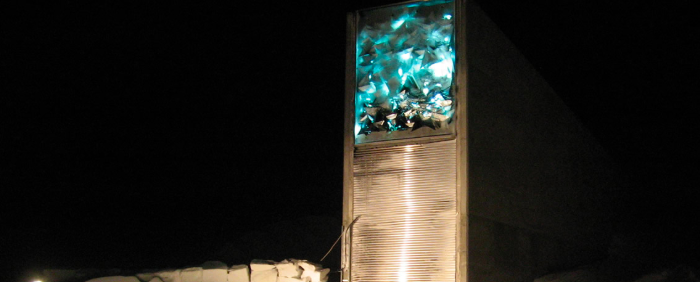
It may seem paradoxical to keep seeds in a safe frozen 1000 km from the North Pole. In this place where nothing grows, the seed bank of Svalbard, located in Norway, is mainly a “rescue bank”!
In situ and ex situ collections
More than 1,500 gene banks store seeds or vegetative organs around the world. From the smallest to the largest, some serve as “memory” for breeders and others respond to urgent requests from farmers for the next harvest.
In situ banks are seed stocks kept close to production sites. The largest international centers are located in endemic areas. Thus, 120,000 rice varieties are kept at IRRI in the Philippines, 27,000 maize at CYMMIT in Mexico, 7,000 potato at CIP in Peru. Many smaller collections exist, but many are fragile in size, operation and resources. They may be located in politically unstable areas or in a threatened environment.
Keeping the seeds out of their center of origin: ex situ collections
In order to save seeds for the long term and for global food security, the idea of collecting a collection on the Norwegian island of Spitsbergen was born in 2008. The Svalbard World Nature Reserve is now funded by foundations. , States and private bodies under the scientific supervision of the Food and Agriculture Organization of the United Nations (FAO), GCIAR (Advisory Group for Agricultural Research) and other institutions through the Crop Trust Diversity Trust created in 2004.
A temperature always negative
It is naturally cold and dry in this safe installed in the permafrost, where three cold rooms have been dug. The temperature is lowered to -18 ° C and the seeds are protected in envelopes placed in boxes and kept on shelves. The seeds then have an extremely reduced metabolism and their conservation is maximal.
A storage capacity of 4.5 million seeds
Currently, the Svalbard genebank comprises 820,000 batches (samples) from all over the world of major food grains (maize, rice, wheat, barley, sorghum …) and vegetables(eggplant, lettuce …) and tubers (potato…).
A perfect model of long-term preservation?
From a technical point of view, the world seed reserve Svalbard is a guarantee of the durability of the collections, because the site is frozen permanently. There is no need to worry about melting glaciers or rising sea levels, or any tectonic activity. Likewise, the administration and international management of the Svalbard Center is a guarantee of continuity and security. But by choosing public-private funding, the center is subject to criticism of access to seeds. There is a data bank for international exchanges, but the Center is not organized to respond to individual or urgent requests from farmers. This “ark of Noah’s seeds” is complementary to the banks in situ, hoping that it will not need to replace them!